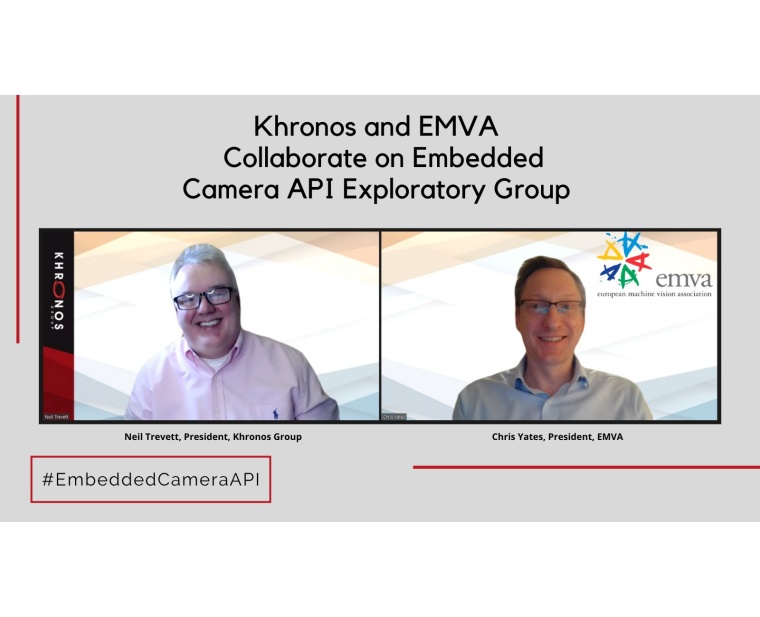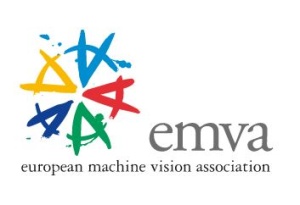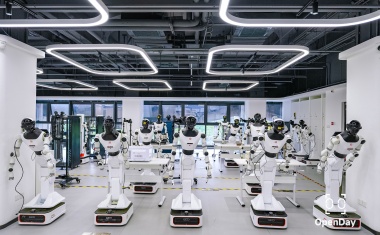EMVA and Khronos gather requirements for embedded standard
The European Machine Vision Association (EMVA) and Khronos Group established a joint Embedded Camera API Exploratory Group. The goal is to explore industry interest in creating open, royalty-free API standards for embedded camera and sensors. Participation is open to all interested sensor and camera manufacturers, chip providers, and software developers from the machine vision and sensor industries.

The exploratory group, in collaboration with the EMVA, will leverage Khronos' proven framework for new standards initiatives. All companies, universities, consortia, open source participants and industry experts are welcome and can participate free of charge after signing a confidentiality agreement. All participants will discuss equally in the creation of a Scope of Work (SOW) that describes an overarching consensus on a standards initiative for the participants and their markets. The exploratory group is expected to meet online several times over a period of several months beginning March 25, 2021. More information and contact addresses are provided on the EMVA website.
The Embedded Camera API Exploratory Group was formed in response to requests from industry. There, camera sensors are increasingly being tightly integrated into vision- and autonomy-critical systems. However, innovation and efficiency in the embedded vision market is constrained by the lack of open, multi-vendor API standards for camera control, thereby reducing development and integration costs. A unified set of interoperability standards and guidelines for embedded cameras and sensors could streamline their use by manufacturers and system integrators in that it would enable control of a wide range of camera sensors, 3D sensors, camera arrays, and ISP hardware to generate complex image streams for downstream processing by disparate devices.
Many industry leaders already on board
Many leading companies in the extended IT industry have already expressed interest in joining the Exploratory Group. These include Al3D, Almalence, AMD, Apertus, Area, Arm, Cadence, Codeplay, Collabora, EA, Facebook, Google, Holochip, HP, Huawei, Lunar G, Mobica, Nvidia, Oculus, Oppo, Qualcomm, Redhat, Texas Instruments, Ultraleap, and Valve by Khronos; as well as EMVA members and machine vision players such as Allied Vision, Basler AG, Baumer, MVTec, and Stemmer Imaging.
”We are delighted to work with Khronos on this initiative to commonly understand the industry needs for the future of embedded vision”, said Dr. Chris Yates, EMVA President. “Both the EMVA and the Khronos group have a well-established history of standardization developments which enable industry to develop new products more simply, whilst ensuring friction is reduced in the market. This Exploratory Group is an excellent approach to understanding broader industry needs and will bring together many companies and views in an open forum. We look forward to working closely with the Khronos Group and welcoming all new and existing participants to this important initiative for the vision community.”
The Khronos Group
The Khronos Group is an open, non-profit, membership-based consortium of over 150 industry-leading companies developing royalty-free interoperability standards for 3D graphics, augmented and virtual reality, parallel programming, image acceleration, and machine learning. Khronos' activities include 3D Commerce, Anari,Gitf, NNEF, Open CL, Open GL, Open GL ES, Open VG, Open VX, Open XR, Spir-V, Sycl, Vulkan and Web GL.
Company












